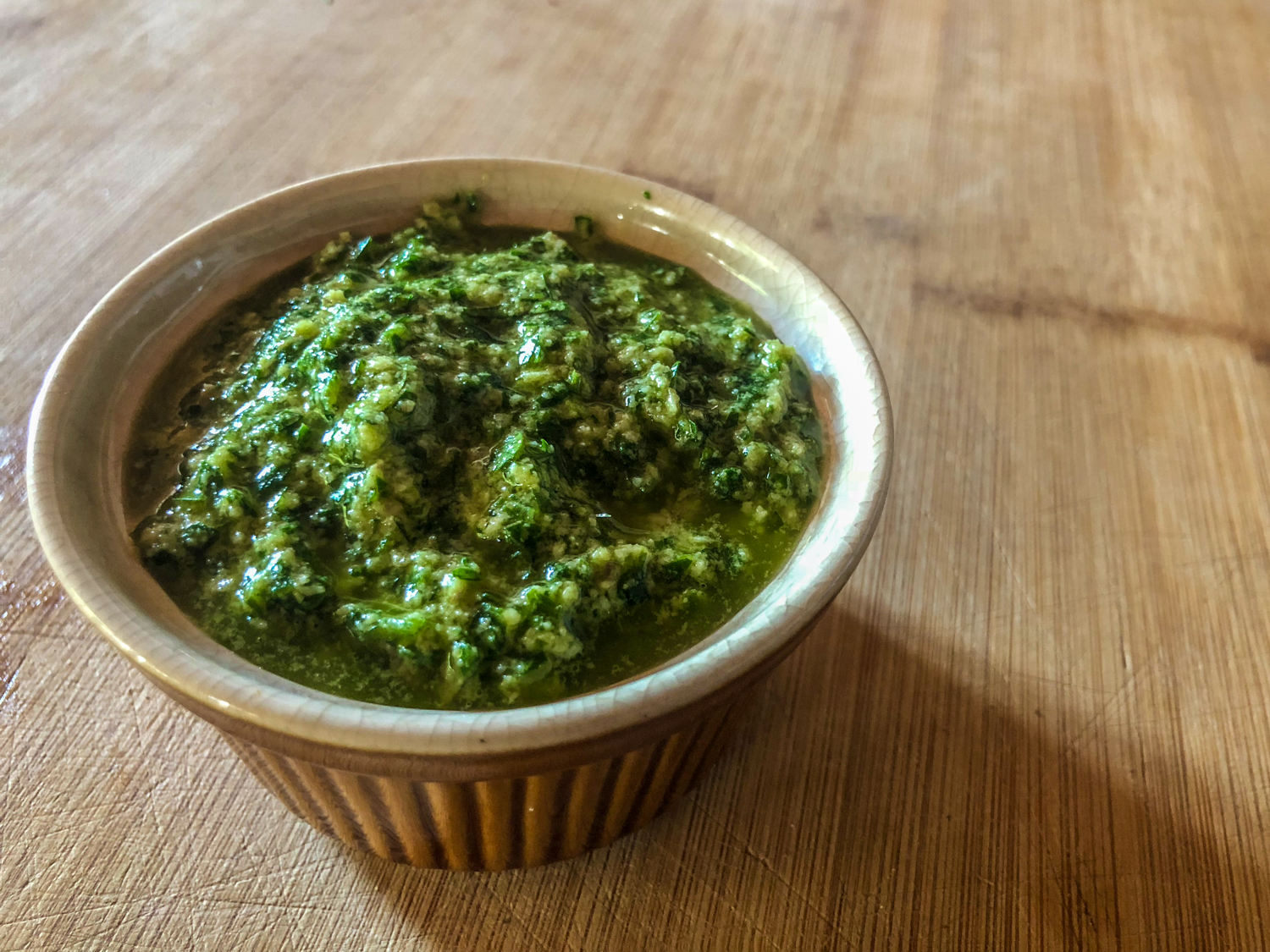Recipes
Bagnèt Verd (Green Sauce)

Here hands are to be puton the table right away, before even beginning to list the ingredients.
Calm your tempers or you proud Piedmontese, no one can ever take away your family recipe, personally delivered on a crumpled piece of paper by some distant relative. That always will remain your version of the green bath, the best one, which over the years has become theonly conceivable one for you.
What we can do, however, as cultural transmitters of this corner of Piedmont, is to provide the necessary foundation for those who do not yet have a personal recipe and wish to indulge in passing one on to their successors.
So here is the starting point, the“introduction kit” to one of the most beloved and talked-about local recipes, to which you can add and remove whatever you most desire.
The very first thing to do is to sit down and assess the time and desire available: mixer or bezel?
The DOC Piedmontese would not even question it, because as grandmothers well teach, the mixer“denatures” the parsley, making it bitter and dark.
However, we have little tricks for you so we will use it to guide you through the steps, but if you are a purist feel free to use the bezel.
Place the blender in the refrigerator at least half an hour before starting to prepare the dip: the cold blades will prevent overheating of the parsley, preventing browning.
Place the bread crumbs (or stale bread) in a large bowl, and pour the half cup of vinegar evenly over it; set aside to absorb.Cut the parsley into as small pieces as possible and place it in the blender along with the garlic clove, also previously cut.
Clean the anchovies under running water, taking care to remove salt residue and most of the bone, after which add them to garlic and parsley.
Also add a drizzle of oil to the blender, just enough to allow the ingredients to chop easily, then start it up by proceeding in small bursts, never longer than 3 seconds, giving the mixture a few seconds between starts.
Squeeze out the soaked crumbs well, and add them to the now-formed cream. A few final shots of the mixer will yield a bath with a creamy consistency.
Consider now, based on taste and appearance, how much oil to add to achieve the desired delicacy and softness.
Here is your green bagnetto: not experimental, not extreme, a mere and simple staple of Langa cuisine.
That the green bath is now a staple in traditional cuisine there is no doubt, but how did it come to take root in our culture?
The story goes back to the mid-19th century, in the court of the Savoy family: the then cook and pastry chef Giovanni Vialardi, drawing inspiration from various recipes popular at the time such as the one described by theOrder of the Knights of the Truffle and Wines of Alba dating back to the early 19th century, devised an early version.
The recipe was part of his treatise“Simple and Economical Bourgeois Cuisine,” a large volume published in 1854 containing more than 1,300 recipes that shaped local food culture for many years.
Since then, versions of this preparation have expanded in every direction, from the simple preferences of home cooks to becoming true gems of haute cuisine: in addition to hard-boiled eggs, capers and chilies, there are complex variations with pickles and porcini mushrooms.
I mean, you name it, but also not; to each his own. What about you, how do you prepare it?
